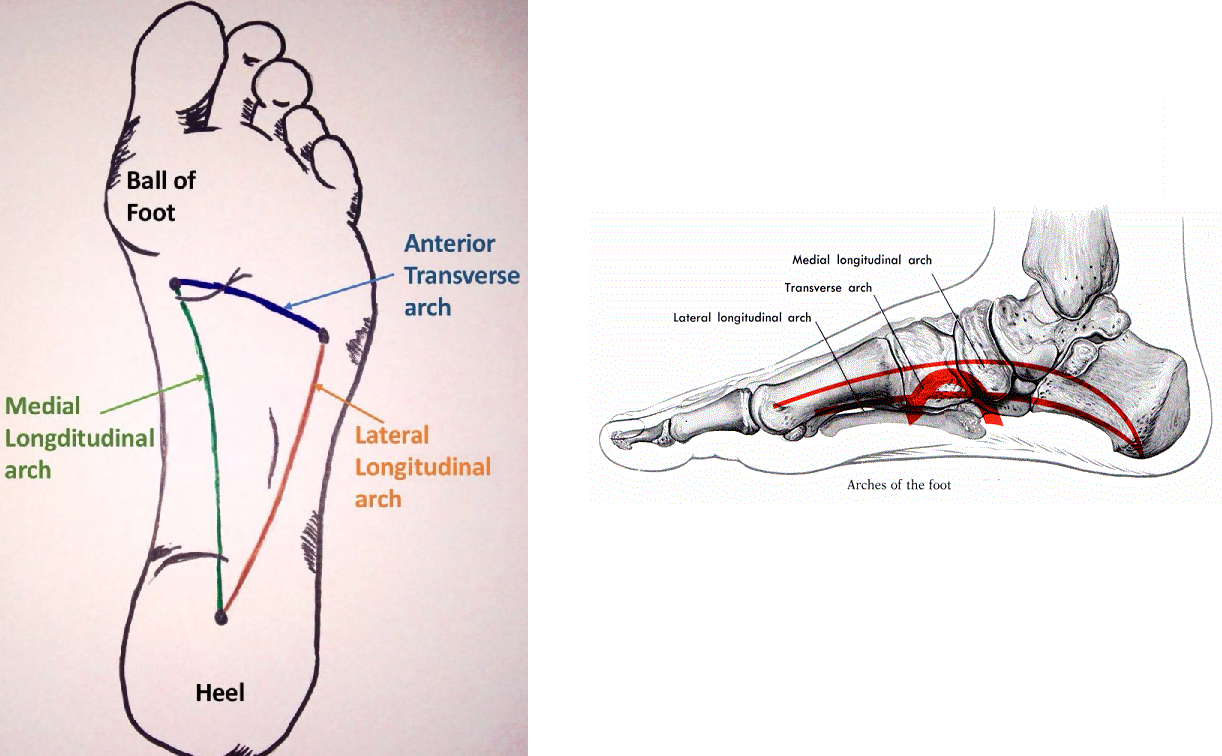Arch
/ɑɹtʃ/
1. [noun] the foot consists of 3 Arches: 2 longitudinal (medial and lateral) and an anterior transvers arch. They are formed by the tarsal and metatarsal bones which are supported by ligaments and tendons which allow for a spring action. Function of the arch is: · Weight bearing · Shock absorption · Locomotion (act of walking) · Adapt to uneven ground

Frequently Asked Questions
How do the arches in the foot assist in everyday walking and movement?
The arches, built from tarsal and metatarsal bones, act like natural springs. They support weight, provide shock absorption, help adapt to uneven surfaces, and facilitate smooth transitions with every step.
Why is the design of the foot's arch similar in concept to a suspension bridge?
Much like a suspension bridge that relies on cables for support, the arch uses ligaments and tendons to maintain its structure. This provides both stability and the ability to absorb impact during movement.
How does the medial longitudinal arch differ in role from its lateral or transverse counterparts?
The medial longitudinal arch bears a significant share of body weight and is critical for weight distribution, while the lateral and transverse arches contribute to balance and shock absorption in specific foot movements.